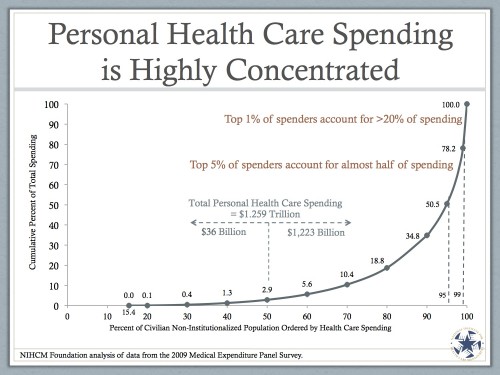FRONTLINE: sick around the world: interviews: uwe reinhardt & tsung-mei cheng PBS
Wow. I can't say enough about this interview. It is so on the mark in so many ways, and it is a pleasure to hear knowledgeable people discuss comparative international healthcare like this.
There are great bits on the real meanings of "socialized" medicine, vs socialized insurance, the German (!) perspective on the dignity of every person, the Canadian perspective on humanism, the leadership of Tony Blair turning around a system on the rocks, how terrifically well America does in training its healthcare providers (especially doctors), but the best is Reinhardt's take on "Consumer Driven Healthcare", quoted here:
We've heard some people have proposed that a solution for America is something called consumer-driven health care. How does it work? What is it?
... Well, the name "consumer-driven health care" at this time is a deceptive marketing label. What we're really talking about is an insurance policy with a very high annual deductible -- up to $10,500 per family, and less for an individual -- and then coupled with a savings account into which you can put money out of pretax income; you don't have to pay taxes on such income.
Now, this has the advantage ... that people faced with this deductible will think twice before going to the doctor for trivial issues or drugs they don't need, etc. But of course the problem also is that they may not go when they should or may skimp on the drugs they should be using, like a blood pressure drug, so that one would have to be solved by saying preventive services will have first-dollar coverage. So you could solve that problem.
But then what I argue is, yes, it may have the economic effect of cost control, because you then would have to know the prices different doctors charge, and hospitals and pharmacies, and something about the quality. And that information at this time exists only in a few areas. The insurance companies are beginning to work on Web sites that will give you that, but it's still very primitive and fairly unreliable information. So that is why I compare it really more like thrusting someone into Macy's department store blindfolded and say, "Go around; shop smartly." ...
The other problem that I see with it, though, is it has ethical dimensions to it that people don't appreciate. If I make anything tax-deductible, then a high-income person in a high tax bracket saves more than a poor [person]. So supposing a gas station attendant and I each put $2,000 into a health savings account, and we get a root canal -- about $1,000, just the drilling. It costs me about $550 because I'm in the 45 percent bracket. The gas station attendant may, in fact, not pay federal income tax because the income is so low but may only pay Social Security, so he saves 8 cents on the dollar. So a root canal will cost me $550; will cost him $920. ...
Secondly, think of a family of two professionals, each making $140,000, close to $300,000 income, and they have, say, a $5,000 deductible. Would they deny their child anything that they think the child needs over a lousy $5,000? ... But think of a waitress who makes $25,000 with a $5,000 deductible, and her kid is sick. It will certainly make her think twice. She's likely to say, "Maybe not." So therefore we're asking the lower half of the income distribution to do all the self-rationing through prices. ...
And the third issue is this deductible. If you're chronically healthy, you don't actually ever spend as much as that; you have a tax-free savings account. If you are chronically ill, on five drugs, you're going to spend that deductible year after year. So the proposal is to shift more of the financial burden of health care from the shoulders of the chronically healthy to the shoulders of the chronically sick.
And I would say, imagine a politician coming to the people with a platform that I just described in ethical terms. ... You think that would sell? So they say, "We've got to find a better name. Why don't we call it consumer-driven health care?," and have all these deceptive labels that even George Orwell wouldn't have thought of. That is what I find troublesome. Yes, it's an approach to health care, but could you please describe it to the American people honestly, in all of its dimensions -- not just economics but information and ethics? And that's not done. ...
One answer he gave about physicians income left me with more questions that when I started:
Yes, American doctors get paid more, relative to average employees, than doctors in other nations; that is true. It's about five times average employee compensation, and in England it's about two, and in Canada it's about three. So that's certainly true.
Given the unprecedented income disparity in this country, it is hard to know what to make of these figures. Comparison to the median would have been more helpful, but I think the most interesting would be to see in which decile physicians place in each country. I will try to find that data.
This Frontline Website is a gold mine. Thanks to the indispensable CPB.
Sphere: Related Content
